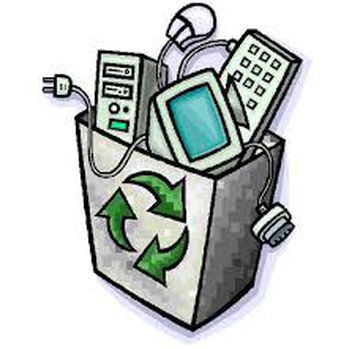Managing your e-waste effectively!
Last Sunday, I bought a new Samsung smart phone. I wanted to scrap all my previous series of Nokia and Samsung mobiles. The next day, I noticed a big pink tub in my balcony full of water where my discarded mobiles were floating around like titanic before sinking in. I asked my mother what this was all about, she innocently replied that she just did this to ensure proper disposal of the devices...!
This is a common scenario, we all come across such situations. We buy new electronic devices and dispose of the old one. Hardly any one of us know where and how such waste is treated. Many of us don't even know about E-waste, leave alone managing it.
E-waste in very simple terms is “Any electronic device discarded for use or kept for resale, reuse, recycle or remodeling for a long time”. Electronic items that are considered to be hazardous include, but are not limited to: Televisions and computer monitors that contain cathode ray tubes, LCD desktop monitors, LCD televisions, Plasma televisions, Portable DVD players with LCD screens.
Every household has kilos of e-waste that they don't know how to dispose off. In most of these cases it is seen that it lies idle for years. More than 45 million metric tons of e-waste is disposed of worldwide every year, leaving behind Lead, Cadmium, Mercury and other hazardous waste.
Every individual wants to be at par with the latest technology trends. Updating smartphones and laptops are common these days. Upgrading to LED TV's / washing machines, etc are the norm. Manufacturers of electronic gadgets and home equipment keep adding new features to their products. So it is not uncommon for customers to strive to get rid of the older versions of the same products. This adds to the burden of scrapped material.
In developing countries, informal processing of electronic waste may cause serious health and pollution problems, as these countries have limited regulatory oversight of e-waste processing. Many developed countries use them as dumping grounds for their e-waste management. Managing e-waste in India is now slowly taking priority. Till date there are no definite e-waste regulations in India to control the management of e-waste.
It is highly important for us to understand impact of e-waste on the environment. It has exhibited substantial digestive, neurological, respiratory, and bone problems for people living around the "dumping areas."
As a responsible citizen, we can ensure the following to reduce the effects of e-waste:
- Always buy electronic products when there is an actual need . Not just to meet trends.
- Be cautious not to buy duplicate hardware / electronic devices. It will ensure seizing production of non standard products thus minimizing electronic wastage due to product failures.
- Try to buy electronic devices with extended warranty. It will reduce the need of purchasing new devices due "product damage."
- Avoid throwing devices. Think of reutilizing it in some other way. Like a discarded TV can actually become a computer Monitor.
- Also, when buying any electronic product, opt for those products that have fewer toxic parts in them.
- Buy products that are energy efficient.
- Create a mechanism and collect e-waste of your local area. Manage it by handing it to organizations who know how to process e-waste.
- Support NGOs that organize awareness programs on e-waste.
So the next time you plan to buy a new device, think twice!
















